



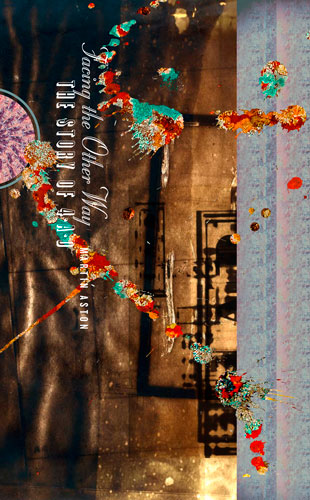
Writing any book is a major undertaking, but writing a 600-page-plus-deluxe-opus about the legendary 4AD record label is a task very few people would be able to manage, let alone exceed at. Author Martin Aston, has accomplished just that, with the help of a few hundred players involved in the making and shaping of the iconic record label of the 1980s and ‘90s. Of course 4AD is still around today, but it was more mythical and ethereal back then, much more dreamlike, and to some a time that will never be seen again. I interviewed Martin, while he was still writing Facing the Other Way: The Story of 4AD (published by The Friday Project, Nov. 2013). This man is a true professional and can handle anything thrown his way. His work as a writer and journalist for some of the UK's top music magazines, covers some pretty amazing history over the last few decades. He has a resume most people would kill for. Martin takes us through the process of putting his current book together, and shares a bit of his knowledge and craft, with a few great insights along the way. Thank you, Martin.
THE INTERVIEW

The Writing Disorder: Congratulations on your new book, Facing the Wrong Way; The Story of 4AD. I've been waiting years for someone to write the story of 4AD. I'm pleased they chose you to do it.
Tell us how you got involved in your current project.
Martin Aston: As far back as 2007, I first mooted the idea of a book, but work commitments meant I couldn’t commit the necessary time and focus to a project as all-consuming as a 4AD biography. That changed by autumn 2011, when I interviewed 4AD founder Ivo Watts-Russell about This Mortal Coil for a feature in MOJO magazine and refloated the idea. I’d also interviewed (4AD in-house designer) Vaughan Oliver a couple of times, and having both on board, I instantly won a deal for the book. I accepted that I would lose great swathes of time: researching and writing a book means you don’t get to leave the house very often, and 18 months on, Facing The Other Way has reminded me of that luxury.
The Writing Disorder: What is your experience or knowledge of the 4AD label?
Martin Aston: I’d bought Bauhaus’ 4AD (or rather, when the label was still called Axis) debut single ‘Dark Entries’ in 1980, and though I wasn’t a collector, I’d bought several 4AD releases (Birthday Party, Cocteau Twins, Colin Newman) through the early years … I first started getting paid to write about music in 1984, and I think my first 4AD-related piece was a Cocteau Twins concert in London, for Melody Maker in December 1994 at Sadler’s Wells, a venue better known for ballet, and I was pretty disappointed by the sound/technical issues. In the era that my book concentrates on — when Ivo was in charge, 1980 to 1999, I often wrote about 4AD artists, from Dead Can Dance to Throwing Muses, Pixies to Belly, The Breeders to Red House Painters — who I introduced to Ivo after Mark Eitzel of American Music Club had passed on RHP’s demo to me. I also wrote the sleevenotes for 4AD’s 1992 compilation Lilliput.
The Writing Disorder: Whom did you interview for the book, and how were the interviews conducted?
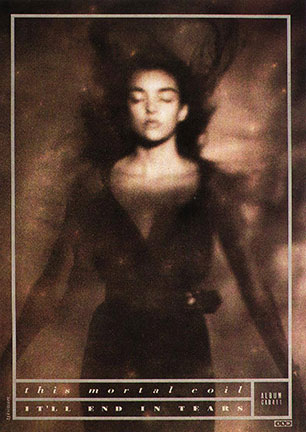
Martin Aston: I think I’ve done around 115 interviews for the book, so I can’t list them here, but I have done on the Facebook page for the book (www.facebook.com/facingtheotherway4AD) but I talked to at least one member (sometimes all) of any given band, and every solo artist, who released an EP or more on 4AD in that 1980-1999 era. There is also a (lengthy) closing chapter on what has happened to 4AD since Ivo sold his share of the label, and some commentators reckon the post-millennial 4AD is as strong now as it was then. But the book’s story arc concentrates on the 4AD of ‘legend,’ the label that people are so fiercely loyal about, and discuss/collect/trade on fan forums and Facebook groups. And that is the story, really, how it became what we love about 4AD, and then went into relative decline in the Nineties and why Ivo decided to sell up. Where possible, the interviews were done in person. But with many artists based in America and the lack of finance and time to zig-zag across both America, and also the UK, a large proportion were done by phone/Skype. Most interviews were followed up with emails, or second interviews, as other questions formed in my head, or information needed qualifying.
The Writing Disorder: Did you interview Vaughan Oliver or Elizabeth Fraser?
Martin Aston: Vaughan was interviewed numerous times, often at his house, and I had material from my old interviews with him. He’s designed the book jacket for both the standard edition and the limited version (1000 copies: different artwork, packaging, plus two CDs of music that I have compiled: 4AD 1980s and 4AD 1990s). The only ‘major players’ that I didn’t get were Nick Cave (his PA said that he gets too many requests … yeah, but none about 4AD) and … Elizabeth Fraser. I never got a response to emails, and I was told by third parties that discussing the history of Cocteau Twins in any forensic detail was too painful, in light of her split with former bandmate/boyfriend Robin Guthrie, and their present relationship.
The Writing Disorder: Who were that hardest people to get in touch with? And who provided the most insight?
Martin Aston: It took me six months to track down Neil Halstead of Mojave 3, as he was always somewhere else — or maybe just surfing! A couple of industry people were equally elusive for a time. However, the ones where I failed were brothers Dave and Alan Curtis of Dif Juz, they appear to have totally vanished; not even their former bandmates nor their publishing company (who would send them song royalties if they could) have any idea, and there is zero online presence. It’s a total mystery. The most insight? Well, Ivo was interviewed extensively, both at his home in New Mexico and innumerable follow-up calls, and this book couldn’t exist in any meaningful form without him. Vaughan Oliver was great, and especially key witnesses were Miki Berenyi (Lush), Mark Cox (Rema-Rema, Mass, The Wolfgang Press), Nigel Grierson (Oliver’s partner in 23 Envelope), Robin Guthrie and Simon Raymonde (Cocteau Twins), Kristin Hersh (Throwing Muses/50 Foot Wave), Robin Hurley (4AD staffer), Brendan Perry (Dead Can Dance), Kim Deal (Pixies/The Breeders/The Amps) and Nick Currie (The Happy Family).
The Writing Disorder: What were some of the difficulties involved in gathering all this information together?
Martin Aston: Logistics versus time (I needed a deadline to aim at, and so did the publishers). The story of a record label involves, along the way, the story of every artist as well; some had a relationship with 4AD for 15 years and more. Listening to every record on 4AD — either to refresh my memory or form an opinion for the first time — enough to be able to write about them, and ask pertinent questions relating to them, took time: 4AD’s first three years alone has over 50 releases. But that was the joy of the task: full immersion. It’s been overwhelming, but it’s unquestionably the most compelling and satisfying project I’ve yet embarked on.
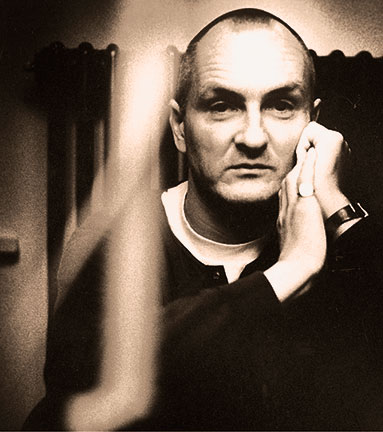
Ivo Watts-Russell of 4AD
The Writing Disorder: You have worked for MOJO, Q, and other music magazines. Tell us about some of the articles you’ve written, and also some of the bands you’ve covered.
Martin Aston: I’ve been writing for 29 years, so it has to be boiled down to highlights. Interviewing heroes can be counter-productive — Lou Reed really was as unpleasant as legend has it but the rest didn’t disappoint; David Bowie — I was one of those people whose life seemed to begin again on seeing him perform ‘Starman’ on TV — Peter Hammill (Van Der Graaf Generator), Peter Perrett (The Only Ones), Morrissey at the height of Smiths fame, Jeff Buckley (I did his very first interview, in 1992), Alex Chilton in 1986 (his first UK interview in a decade), a very young Kristin Hersh (who for me is crucial to the 4AD story, and she has the final words in the book), several R.E.M. chats in the late ‘80s/early ‘90s. Sugarcubes’ first UK interview (which led to writing a book on Björk), early Suede interviews, Bad Brains in a Brooklyn household and a shipment of marijuana (them more than me; I wouldn’t have gotten the questions out otherwise), Lux Interior and Poison Ivy of The Cramps in the mid-‘80s, coming into the hotel bar at midnight, looking so perfect, and so perfectly out of place, and so right. This summer, meeting Dorothy Laflin of the obscure late Sixties/early Seventies psych-prog duo Ramases; she was 71 and it was her first interview. Roy Orbison six days before he died…. One hugely personal favourite was for The Guardian (newspaper) on the story of Song To The Siren (www.theguardian.com/music/2011/nov/17/song-to-the-siren-classic), from how Tim Buckley’s original and This Mortal Coil’s first cover version led to many other covers over the years — the song is now a modern standards. A slew of film and TV-related interviews that mean I’ve been incredibly privileged to get these opportunities.
The Writing Disorder: How did you first get involved in the music scene? What bands were you into at the time?
Martin Aston: I wrote a couple of pieces for a friend’s fanzine (can’t remember the name, sadly) circa 1980, then some reviews for a music trade weekly Record Business, but the first paid commission was New Order live for Melody Maker, and it grew from there. Without ransacking my compilation tapes from that era, I was especially taken with The Smiths, R.E.M, Echo & The Bunnymen, Robert Wyatt, Felt, Associates, Cocteau Twins, Violent Femmes and New Order. As I started writing more, it was stuff like The Rain Parade (first album), and pretty much everything on New Zealand indie Flying Nun (The Chills, The Clean, The Verlaines et al), which was the one label I did collect (the incredible quality, the ‘otherness’ of Southern Hemisphere guitar-pop) because I still wasn’t collecting 4AD, though I was being given every release by that point.
The Writing Disorder: How do you begin a project like this book, and how long did it take to write?
Martin Aston: I had a wealth of material from old interviews, and then I had most of the records, and then I just started new interviews, not starting with, but soon enough, spending a week at Ivo’s house, and I didn’t write anything for the first four months, I just talked and compiled information. It took five months to outline a first draft, another five to expand and refine, and another four to finesse while putting together the photo section, doing the last interviews, and choosing the music for the limited edition CDs, which had to fit 79 minutes per CD and sequenced to make it work best. (It was my one chance to give my view of 4AD so I obsessed over it; some first choices sadly were too long, and would have meant sacrificing other artists.). So in total, 18 months, including many late nights and Sundays.
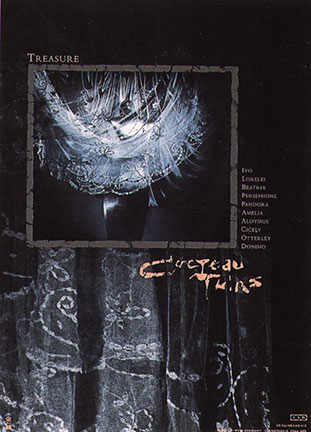
The Writing Disorder: Once you’ve done the initial writing (or first draft) on a project or article, how long does the editing process take?
Martin Aston: Once the publishers had my second draft, they put a copy editor on it, but I foolishly began another edit that I didn’t admit to for the first week; so the copy editor had to start all over again; the moral being, just come clean about the fact you’re not happy with something. After the copy editor had given back comments, I had to integrate them and then it went to a proof-reader. Since then, it’s been six week of niggling changes (and to the photos, and one of the CDs, for money and copyright issues).
The Writing Disorder: Did you know how many pages it would be? What kind of freedoms and limitations were you given?
Martin Aston: I was extraordinary lucky — for the first time since I wrote lengthy interviews for the UK independent trade monthly The Catalogue in the late ‘80s, I was given total freedom – except not to go over 250,000 words. Too much freedom generally isn’t good, but I was allowed to tell the story as I saw fit, and I reached 225,000, and nothing was cut. That’s very unusual, I think. But I had a wealth of material; that told the story from so many sides. It’s highly unlikely anyone else will undertake the task of telling the same story with this amount of detail, because it’s now been done, so it seemed a shame to cut stuff out simply because it needed to be a certain length. It is a door-stopper of a book, that’s for sure, at over 600 pages. I had referred to it as a “door-stopper” but the MOJO review just called it an “über-doorstopper”! But Tony Fletcher’s recent Smiths bio was just as long.
The Writing Disorder: When did you first know you wanted to be a writer?
Martin Aston: English was my favourite/best subject at school; I wrote lots of essays, and then in my teens, copious lyrics that had no music ... but it was re-reading (and again) music papers all through my teenage years that shaped the idea of being a music journalist. I was obsessed with music, and since I didn’t appear to have the brain to learn an instrument, writing about it seemed the best way to connect to it. I have had spells as an A&R man (for Rough Trade) and also an editor of a ‘travel’/city info-related project, and a ton of work for the BBC broadcast weekly Radio Times, but I always comes back to music journalism.
The Writing Disorder: Have you written any fiction or poetry?
Martin Aston: I’m sure the lyrics can count, in some manner, as poems, but in my active imagination, they were always meant to have music to them. They were grouped into albums, side one and side two, with album titles … I’ve read some incredible fiction in my time, but I’ve never tried myself, if I’m ever asked, I always say I don’t know what my story would be, and the truth (or as close as you can get to it) always seemed much more fascinating to me.
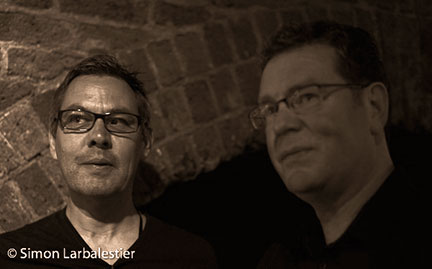
Chris Bigg (left) and Vaughan Oliver of 4AD
Photo Copyright - Simon Larbalestier 2009
The Writing Disorder: Tell us about your life growing up — your family, friends, where you lived, things you did, etc.
Martin Aston: I grew up in dull suburban north-west London, a place called Hendon. My older brother loved music but not obsessively like me; he was obsessive about football and became an accountant. Our parents weren’t creative types, but my dad loved music too — mostly jazz, swing and crooners such as Sinatra, but his love of instrumentation led to Pink Floyd’s Dark Side Of The Moon (certainly more than it did for me, I like my progressive rock darker and gnarlier). My dad was very sporty, and my brother and I played lots of tennis in our teens, for school, at a club … though never professionally. When my brother was going to football matches all over, I spent my time going to concerts and films, record-buying and collecting Marvel comics. Travel became my next obsession.
The Writing Disorder: What was your first professional job as a writer?
Martin Aston: New Order live at Chippenham’s club (from memory) a couple of hours outside London, 1984, for Melody Maker. My friend and I broke down on the motorway, but we fixed the car and just made it in time for the show.
The Writing Disorder: How has journalism/writing changed in the last five years, and professional writing in general?
Martin Aston: The most gradual slide through the ‘90s and into the early Noughties was the decline of lengthy features that typified the music press through the ‘70s and ‘80s, to be replaced by bittier, snappier pieces and larger photographs, with an increased emphasis on celebrity. In print format, MOJO and Uncut are the only exceptions that still exist. Since the online revolution, the above, and a rapid decline in paid work. Online reviews pay a pittance or nothing at all. One recent example, and this is for a printed anthology of one of the world’s biggest ever bands, I was offered £100 for the re-use of 8500 words, which I had to re-edit to submit and proof for the editor to judge and make his offer. They could compile an entire book for around £1000. Content used to be king, now it is a pauper.
The Writing Disorder: Talk about some of your favorite 4AD bands, and what separates them from everyone else.
Martin Aston: The kind of artist that Ivo signed was unique in some aspect; none of them comfortably belonged to any tradition, or genre. You can hear that in The Birthday Party, Cocteau Twins, Dead Can Dance, Throwing Muses (whose first album is my favourite record of the ‘80s), Pixies, Red House Painters… trailblazers all. Even Lush and Pale Saints were signed before the movement they were lumped into was christened shoegazing. And, even then, neither fit the generic sound. It’s when Ivo broke from his own tradition in the early ‘90s that 4AD slipped (eg Swallow, Spirea X). When he followed his heart, 4AD bounced back — creatively anyway. Red House Painters, Heidi Berry, Mojave 3 and Tarnation amounted to an early wave of folk and Americana, years before it was established as a genre. ‘Esoteric’ is a word often bandied about; even Pixies in their day didn’t have Top 20 hits or play arenas. And both Belly and The Breeders, who had hit records, weren’t signed as ‘new’ bands but continuations of artists already in residence. Besides Pixies, the only band that truly crossed over was Dead Can Dance — and that was just for Into The Labyrinth.
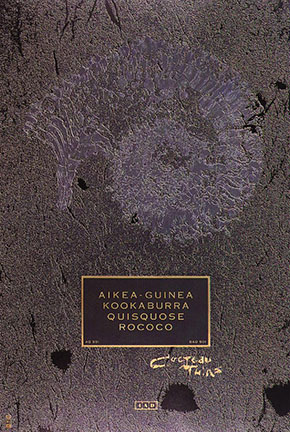
The Writing Disorder: What are your top ten 4AD albums?
Martin Aston: Keeping to one album per band...
1./2. Equally Throwing Muses: Throwing Muses and Cocteau Twins: Heaven Or Las Vegas
3. Red House Painters: Red House Painters (‘Rollercoaster’)
4. Pixies: Surfer Rosa
5. Dead Can Dance: Spleen And Ideal
6. Kristin Hersh: Hips And Makers
7. Tarnation: Gentle Creatures
8. The Birthday Party: Prayers On Fire
9. This Mortal Coil: It’ll End In Tears
10. Pieter Nooten / Michael Brook: Sleeps With The Fishes
The Writing Disorder: There seems to be a lot of bands today trying to emulate the 4AD sound, or shoegazer-style music. If you listen to bands like I Break Horses, Still Corners, Beach House or Wild Nothing, you can hear the influence. How do you account for this trend?
Martin Aston: One point first; though I have written about shoegaze, I think it’s an overrated genre — generically average singers and lyricists; songs less important that effects; not a lot of charisma. I don’t associate 4AD with any of that. My Bloody Valentine were the only innovators. I don't unconditionally love Lush or Pale Saints but they had some brilliant moments and Lush especially were very underrated songwriters. As for bands emulating 4AD, it’s partly due with natural cycles: ‘80s influences have become widespread, across synth-pop/chillwave, and what‘s called nu-gaze. There’s enough of a gap between then and now, for it to seem distant and nostalgic. It’s also easily reproduced these days with sophisticated home studio equipment, and it’s also convenient to mask a lack of good songwriting and singing with effects. Beach House have some lovely songs too but precious little of that sound moves me much (I prefer something with more biter, for example Tame Impala, or the electronic side of opaque ‘beautiful noise’ such as Oneohtrix Point Never, Tim Hecker, Jon Hopkins).
The Writing Disorder: When you’re not writing, what do you do for pleasure?
Martin Aston: Long walks listening to music, travel, film, playing bridge (I’m turning into my mother), photography, watching the brilliant performance artist/raconteur Hoyle, watching my team Liverpool FC.
The Writing Disorder: Do you spend a lot of time on the internet? What sites do you visit?
Martin Aston: I have to spend time on the internet, for research and news feeds; also it’s a mine of information and escapism, two seemingly necessary drugs. I regularly check out Pitchfork, Fader, NME, Queerty, The Guardian, Dangerous Minds, Boing Boing, sometimes blog sites such as Gorilla Vs Bear or 20 Jazz Funk Greats. Chris O’Leary’s song-by-song Bowie site Pushing Ahead Of The Dame is brilliantly, exhaustingly researched and beautifully illustrated.
The Writing Disorder: What about social media, do you spend a lot of time on Facebook, Twitter or LinkeIn?
Martin Aston: Facebook for keeping in contact with friends abroad, but also curious to see what information might come my way. And the Facebook page for the book has been good for interacting with fans. Linkedin seems fairly redundant as far as work offers go, but has proved useful finding people for the book that I otherwise might have had trouble locating. Twitter in theory bores me rigid but I’ve started Tweeting because it is apparently good for the book, but it’s half-hearted at best. So what if people can say something in 140 words? Though I know it’s a good medium for very quickly disseminating information.
The Writing Disorder: Talk about the design work of 4AD. The impact and influence it’s had.
Martin Aston: It’s clear that the work of 23 Envelope and its successor v23 was an integral to 4AD’s identity as the music; its unifying force, its capacity for surprise, its surrealistic tendencies, its range and depth. Some artists found Vaughan’s controlling ways very hard — even impossible — to bear, and thought he will argue otherwise, he didn’t naturally take to the art of collaboration, but they often produced sub-standard sleeves without his input.
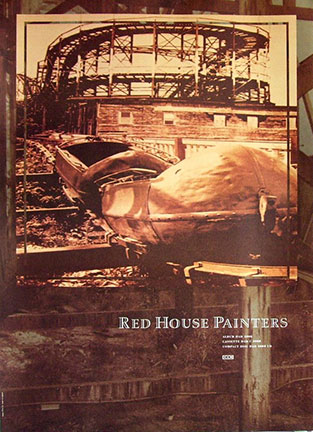
The Writing Disorder: Vaughan Oliver is designing your book? Are you involved with this as well?
Martin Aston: I asked Vaughan to design the book jacket, he said yes. He jumped at the chance to stretch out by doing the limited edition too. I’ve not pushed him in any direction, though he had asked me what I’ve thought of his ideas, and he’s responded to the ones I liked best. It’s given it a ‘4AD’ seal of approval and fits in with people’s perceptions of 4AD, which I’m happy about, but that’s not to say this book was commissioned by 4AD in any way, the current regime gave it their blessing and have been nothing but wonderful and supportive.
The Writing Disorder: Do you have or collect any 4AD promotional material?
Martin Aston: I have a couple of copies of Lilliput and some 23 Envelope/v 23 catalogues, some marketing material and some posters, but I haven’t actively collected 4AD. Though I did recently buy a copy of the sole Richenel release on 4AD, which I inexplicably didn’t own (or was given) at the time, and I realized how much I loved it when I was writing the book. I’m also swopping a copy of the book for a copy of Dance Chapter’s 7” single ‘Anonymity’. I would love a vinyl copy of Rema-Rema’s Wheel In The Roses EP but I have yet to shell out the money needed to buy it.
The Writing Disorder: With fewer and fewer record stores these days, and more people buying their music online, do you see a need for promo posters and other material in the future?
Martin Aston: Short answer; yes. Enough people want memorabilia, triggers for memories. People love pretty, sparkly objects. Stuff. It’s why vinyl has made a resurgence.
The Writing Disorder: What are some of your favorite 4AD designs?
Martin Aston: Rema-Rema: Wheel In The Roses EP / Various: Natures Mortes — Still Lives / Cocteau Twins: Aikea-Guinea EP / Colourbox: Colourbox EP 1983 / Dead Can Dance: Spleen And Ideal / Richenel: ‘L'Esclave Endormi’ 12” / Clan Of Xymox: Medusa / Various: Lonely Is An Eyesore / Pixies – Come On Pilgrim / Ultra Vivid Scene: Ultra Vivid Scene / The Breeders – Pod / His Name Is Alive: Home Is In Your Head / Red House Painters: Down Colorful Hill / Scheer: Infliction / His Name Is Alive: Stars On ESP
The Writing Disorder: Who reads your work first?
Martin Aston: Me. And second. Funnily enough, with the book, I let a good friend read early chapters as we were co-writing a proposal for a 4AD documentary, and she and her girlfriend ended up reading the whole book, and getting feedback while I was doing my final edit was fantastic, because, by then, I couldn’t see the wood for the trees, as the saying goes.
The Writing Disorder: What other projects are you working on now?
Martin Aston: Some features, the odd press biography for a couple of labels, while stewing on another book idea, which I won’t mention yet, in case I take it seriously and actually want to start another cycle of proposal/meeting/deal/writing it. I interviewed Roy Harper recently, and I’m meant to be interviewing Beck soon but no date has been announced.
The Writing Disorder: Talk about some of the other articles or books you’ve worked on, and the various challenges you faced.
Martin Aston: For reasons of wanting to occasionally leave the house, I’ve only written two books before Facing The Other Way: the first full length biography of Pulp, likewise Björk. You have to truly love the subject to get deeply involved; I’ve turned down books because I couldn’t envisage spending a year or more on subject I didn’t feel that way about. Pulp got so successful during the time I started writing the book that they felt they couldn’t commit any more time for interviews, and asked me to postpone the book by a year — it was too late, I’d had my advance by then, and who knows what they’d have said in a year’s time? But I had enough from them to continue anyway, and their people continued to help with photos and archive, but it wasn’t a perfect scenario. Björk felt it was too soon in her career to have a biography; she figured when she was 80 years old was about right! So she didn’t grant me any new interviews, but I had lots of interviews with her over a period of eight years, and she granted me access to anyone who was happy to talk, including her parents, so she was very gracious about it. You can never tell how an artist will react to the idea of a book: Ivo could easily have said no, as revisiting his past — the downside of things, when 4AD and he struggled – was painful for him, and that was his initial reaction until he realised that 4AD deserved to be documented, and if anyone was to do that, it should be me, who he trusted. It was still very hard for him to relive those moments when he was in the throes of depression, and 4AD declined to the point that he sold his share in the label and left the music industry for good. There’s also the aspect of helping people peer behind the magician’s curtain, revealing the truth, sometimes beautiful, sometimes grubby, especially a label such as 4AD that traded on its enigma. But that’s part of the saga I wanted to tell.
The Writing Disorder: Do you see print magazines fading away, or will there always be a print presence?
Martin Aston: Honestly, who knows? I like the physicality of a newspaper or a magazine, but social habits change … we could one day read and watch books and video and film/TV in holograms, so that even computer screens are redundant. Nothing stays the same. And why should it?
The Writing Disorder: What are you reading now? Who are some of your favorite authors?
Martin Aston: I’m currently reading Thomas Pynchon’s Inherent Vices; better late than never. He’s one of my very favourite novelists, but you have to choose your time carefully with Pynchon; his material can be very dense, but brilliant; if I had to choose one book that dazzled me above all others, it was Gravity’s Rainbow. But I read it as I travelled by bus across Indonesia, and the whole exuberance and madness and invention of the story really chimed with what I was experiencing. And I had no distraction from work. For a less demanding read, I have a very soft spot for John Irving, and I recently read his last novel (admittedly a couple of years after it was published) Last Night In Twisted River. Two books I can’t recommend enough that I just read were Bosnian writer Aleksander Hemon’s very recent — and very moving — non-fiction collection The Book Of My Lives and China Miéville’s The City & The City (published in 2009), sci-fi in the vein of Philip K. Dick with a twist of Kafka.
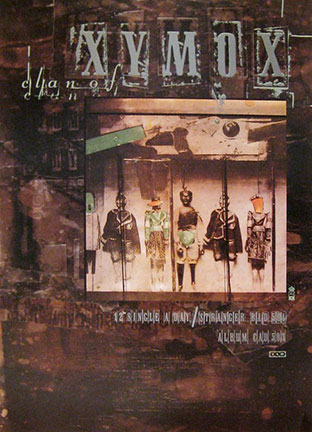
The Writing Disorder: What books did you read growing up?
Martin Aston: Are we talking childhood? Enid Blyton, of course, because that was as commonplace as a Bible, but the book that made the most lasting impression was Madeleine L'Engle’s A Wrinkle In Time, about a young girl whose father, a government scientist, has gone missing. I later had literary crushes on John Fowles, DH Lawrence, Knut Hansun, Raymond Carver, John Cheever, Martin Amis, John Irving, Annie Proulx, bits of sci-fi, Edmund White, and for comedy, David Sedaris, while Ann Tyler can be a bit sweet but she has a wonderful gift for storytelling.
The Writing Disorder: Are there any other writers in your family?
Martin Aston: No.
The Writing Disorder: Was writing encouraged at home?
Martin Aston: Yes. Except I was encouraged to follow my brother into a ‘profession’ and so I — very stupidly — gave up English in order to study Economics alongside History and Geography at ‘A’ Level; my father misguidedly thought I could do well in banking, which, since I wasn’t strong in maths, is completely baffling … What WAS he thinking. Well, maybe that he didn’t excel academically and then earn a ton of money, and as my brother took to accountancy, then perhaps I could also self-improve with financial benefits. He grew to be a big supporter of my writing, so that was special.
The Writing Disorder: Many years ago, there was a documentary made by the BBC on the 4AD label. I’m sure you’ve seen it. It would be great to have that included with the book as a bonus DVD. Has anyone considered doing that?
Martin Aston: If it’s the one I’m thinking of, have you watched it? It’s poorly filmed, the interviews are mostly mumbled, and the quality is typical of the time. It doesn’t show the music, or the personnel, in a great light, so I wouldn’t want to be associated with it. Maybe I’ve got the wrong doc, though.
The Writing Disorder: Will there also be an ebook version of the 4AD book? If so, will it include any audio or video pieces? (If not, I would love to help put it together.)
Martin Aston: There will be an ebook, but so far there have been no plans to make it multi-media; it’s not been my primary concern. The printed version, the ‘artifact’ as Ivo would call it, is the thing. I’ll let you know what might be done in due course!
The Writing Disorder: Your new book is about 4AD, but are they involved in the publishing of this book?
Martin Aston: No, as I said earlier. They just helped with access to their archive, checking photo credits, and taking my phone calls.
The Writing Disorder: Did you have any resistance or problems with anyone working at the label currently?
Martin Aston: None at all.
The Writing Disorder: Do you have any advice for writers or journalists coming into the field today?
Martin Aston: The options are more limited now, in terms of being paid… When I was starting out in music journalism, there were four weeklies, several trade magazines, I was UK correspondent for a couple of leading overseas titles, then you had the rise of the monthlies like Q, MOJO, Vox, etc. There was a lot of choice. Now, a lot has shifted online and you can’t get paid for a lot of the outlets. It’s so tempting to write for free, to get experience, to get your name out there, and sometimes to have the chance to write lengthy pieces that you wouldn’t otherwise have the chance to publish. But I can’t help feel it undermines the profession, which can surely only work against you in the long run, and undermine your writing peers. If you’re good, and can stand out, then someone is going to pay you. But that’s easy for me to say. And these days, I don’t often earn enough myself to show that the paying model works. Writing books isn’t the key to earning a lot of money, not the kind of books that I want to write, perhaps, it’s a lot of work and advances are smaller every year. But if you love writing, and again, if you are good at it, and you have a story, or a way of telling someone else’s story, then you will find a way. If it’s music, see as much live music as possible, talk to people, find a story, something you don’t think anyone else has written about, dig deeper into the areas of music and related subjects that you find most rewarding. Failing that, try banking...
The Writing Disorder: When you want to escape and get away from life’s responsibilities, what do you listen to first?
Martin Aston: If we’re talking going for something ‘meditative’, or a ‘Sunday morning’ nature, it’s a toss-up between Tim Buckley’s folk-jazz period, Nick Drake, Galaxie 500, Stars Of The Lid, Eno and sides two of Bowie’s Low and Heroes. If I’m feeling more combative, much of Van Der Graaf Generator (especially Pawn Hearts) and Peter Hammill’s ‘70s catalogue (especially The Silent Corner And The Empty Stage) is a fantastic, bottomless pit of strangeness and beauty.
The Writing Disorder: Thank you very much for your time.
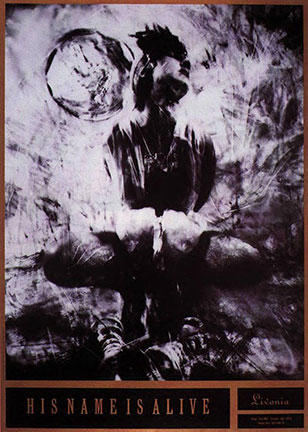
BIO: Martin Aston has written about music since 1984, the same year he first reviewed a 4AD artist: a Cocteau Twins show for the British weekly Melody Maker. He has since contributed to a variety of publications, including MOJO, Q, The Guardian, The Times, Attitude, Radio Times and BBC Music Online. He is also the author of two previous books: Pulp (MacMillan) and Björkgraphy (Simon & Schuster). He lives in south-east London.
To follow updates on the book, visit: Facebook
For more details about the book, visit: Facing the Wrong Way: The Story of 4AD
ISSUE:
F A L L
2013
SUPPORT THE ARTS
DONATE TODAY
GET A FREE T-SHIRT!
By accessing this site, you accept these Terms and Conditions.
Copyright © 2010-2013 TheWritingDisorder.com ™ — All rights reserved